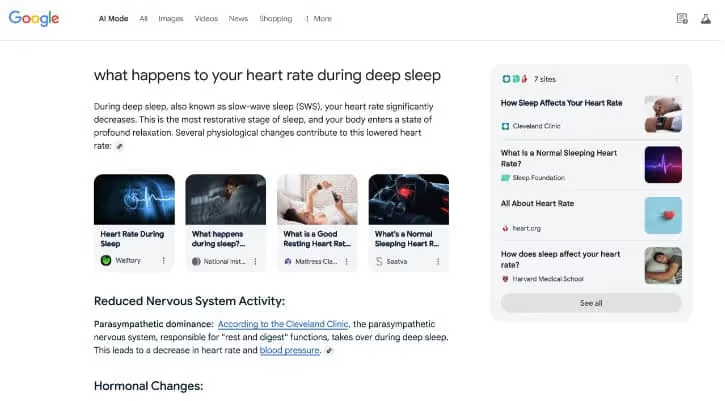What if your content never ranks in AI-generated answers, even though it’s SEO-perfect? That’s the harsh reality many of us are waking up to in the age of ChatGPT, Perplexity, Gemini, and Bing Copilot. Traditional SEO isn't enough anymore — welcome to the era of Generative Engine Optimization (GEO).
- What Is GEO and Why Should You Care?
- From SEO to GEO: How Search Behavior Has Changed
- Key Ranking Factors in GEO
- Generative Engine Optimization Tactics: What You Can Do Now
- SEO vs. GEO: Why You Need Both
- Bing & Microsoft Copilot: Why You Shouldn’t Ignore Them
- Measuring Success in GEO
- Final Thoughts: GEO Is the Future
What Is GEO and Why Should You Care?
GEO, or Generative Engine Optimization, is the strategic process of making your content visible and reference-worthy in the answers generated by conversational AI platforms. Unlike traditional SEO, which fights for a spot in search engine result pages (SERPs), GEO aims to be the source behind AI-generated summaries.
As users shift from keyword searches to asking full-blown questions in natural language, the marketing battleground has moved. AI-powered interfaces now serve as the gateway to content discovery, and only a handful of sources make it into each answer. If your content isn't optimized for generative models, you're not just losing clicks; you’re vanishing from the digital conversation entirely.
From SEO to GEO: How Search Behavior Has Changed
Users no longer want 10 blue links. They want one clear, concise answer.
- ChatGPT analyzes queries and crafts responses based on quality, relevance, freshness, and credibility.
- Perplexity AI emphasizes real-time results from authoritative, focused sources.
- Gemini (Google) leverages its ecosystem and “Deep Research” to pull data-rich, citation-heavy summaries.
- Bing Copilot depends heavily on structured content and exact keyword matching in trusted sources.
Each engine evaluates content differently, but the north star remains the same: provide trustworthy, structured, intent-matching answers.

Key Ranking Factors in GEO
To win at Generative Engine Optimization, your content must align with how AI models evaluate and synthesize information. Here's what matters most:
1. E-E-A-T: Experience, Expertise, Authoritativeness, Trustworthiness
Models prioritize sources that show deep industry knowledge and user credibility. Add author bios, cite data, and link to reputable sites.
2. Natural Language & Query Matching
AI models interpret long-form questions. Tailor content to answer them directly. Think FAQs, how-tos, and conversational titles.
3. Content Structure
Use H2/H3 headers, lists, and schema markup. Clear formatting helps AI parse and quote your material.
4. Source Authority & Backlinks
Just like SEO, being referenced by high-authority domains boosts your standing in Generative Engine Optimization. Build digital PR and earn mentions.
5. Recency & Relevance
Update frequently. AI engines like Perplexity favor fresh, timestamped data with high contextual relevance.
Generative Engine Optimization Tactics: What You Can Do Now
Rethink Keyword Research
Focus on question-based long-tail queries and semantic variants. Use tools like AlsoAsked or AnswerThePublic to understand how people phrase queries.
Match User Intent with Precision
Write content that mimics human dialogue. For example:
❌ "Best CRM tools"
✅ "What are the best CRM tools for small businesses in 2025?"
Use Structured Data (Schema Markup)
Help AI interpret your content with Schema for articles, reviews, FAQs, and videos. This improves inclusion in Bing Copilot and ChatGPT summaries.
Go Multimodal
AI loves variety. Add transcribed videos, podcasts with show notes, and ALT-tagged images. This creates richer, more quotable content.
SEO vs. GEO: Why You Need Both
FeatureTraditional SEOGEO (Generative Engine Optimization)OutputRanked web pagesSummarized AI responsesGoalHigher search rankingInclusion in AI-generated answersContent TypeKeywords & backlinks focusedConversational, structured contentMeasurementCTR, Bounce Rate, RankingShare of voice, AI mentions, traffic from AIEngine DependencyGoogle, BingChatGPT, Perplexity, Gemini, Copilot
SEO remains foundational, but GEO is your ticket to the next wave of visibility.
Bing & Microsoft Copilot: Why You Shouldn’t Ignore Them
Bing is the backbone for Copilot and powers the results seen in many AI summaries. Optimizing for Bing — through proper meta tags, fast load times, exact-match keywords, and structured markup — boosts your visibility across multiple AI interfaces.
Tip: Claim your listing on Bing Places and use Bing Webmaster Tools to track your AI ranking footprint.
Measuring Success in GEO
It’s not just about traffic anymore. Here’s how to measure Generative Engine Optimization performance:
- AI Impressions: Times your content appears in AI answers.
- Share of Voice (SOV): Your brand’s visibility vs. competitors in AI results.
- Referral Traffic from AI: Click-throughs from sources like Perplexity or Bing Copilot.
- Engagement from AI Users: Time-on-site and conversion rates from AI-referred traffic.

Final Thoughts: GEO Is the Future
Generative Engine Optimization isn’t a trend — it’s the evolution of digital visibility. The brands that understand how generative AI models work and optimize accordingly will dominate the next chapter of search.
At Capa de datos, ayudamos a los equipos de marketing a unificar los datos de plataformas como Google Ads, Bing y Meta, entre otras, para que puedas analizar el rendimiento impulsado por la IA junto con las métricas tradicionales. En este nuevo panorama, la visibilidad ya no se basa solo en los motores de búsqueda, sino en la respuesta.


_%20How%20to%20Optimize%20Your%20Content%20in%202025.avif)




